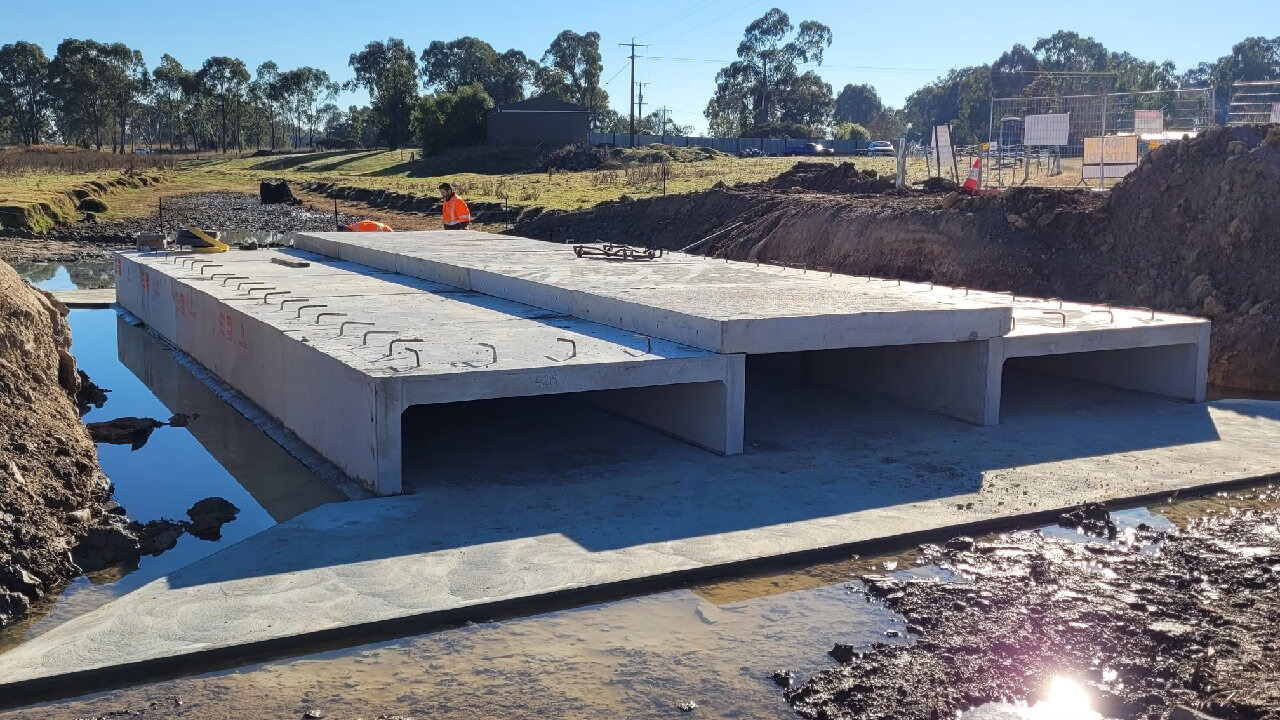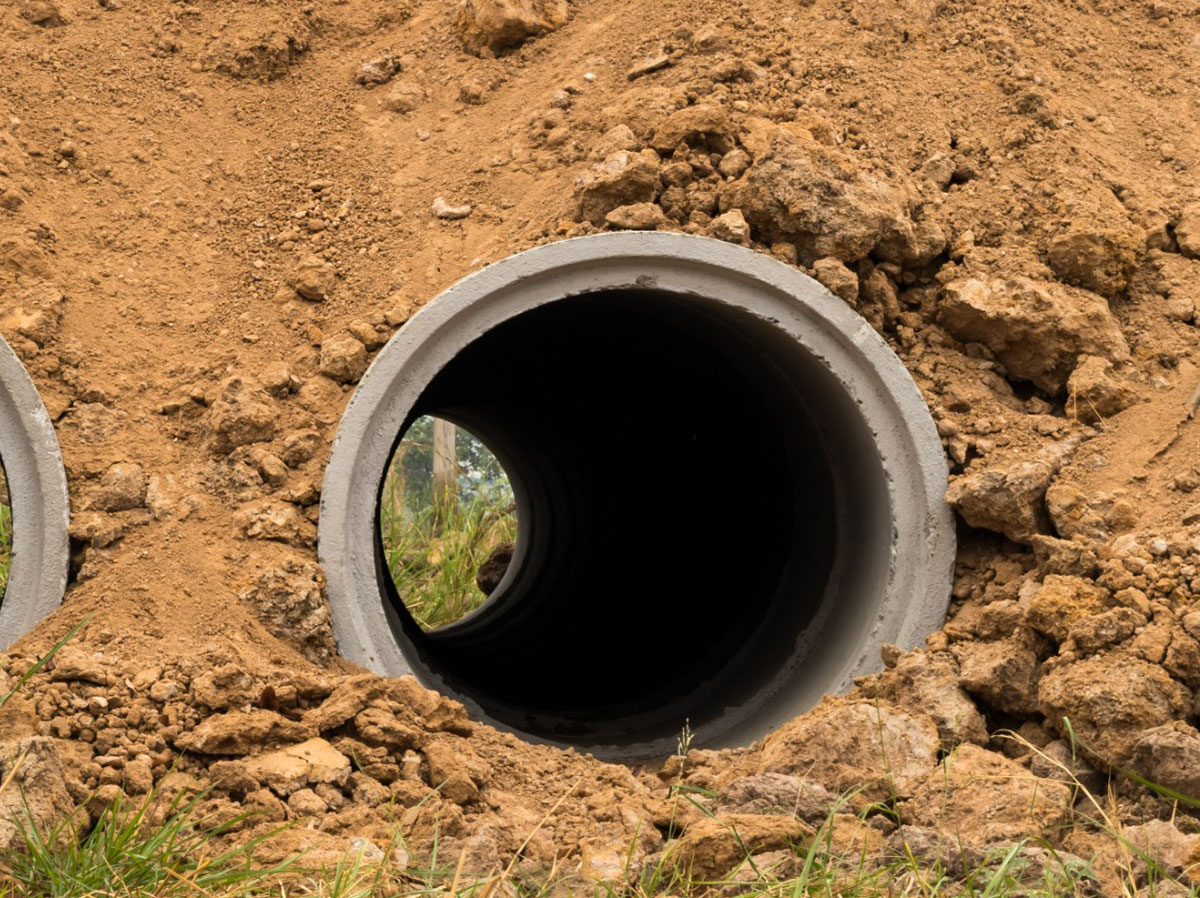Top Quality Road Construction for Long-Lasting Roads
Culvert Installment Made Easy: Step-by-Step Guide for Success
Mounting culverts might appear like a simple job, but guaranteeing an effective result needs mindful preparation and execution. From picking the proper culvert dimension to incorporating proper drain steps, each action in the installment procedure plays a crucial function in the capability and long life of the culvert system. By adhering to a systematic approach and paying attention to crucial information, the installment can continue efficiently, reducing potential issues down the line. Stay tuned to reveal the essential actions and considerations that can make culvert installation a seamless and effective undertaking.
Picking the Right Culvert Size
Selecting the ideal culvert size is important for guaranteeing reliable water flow and structural integrity in culvert setup jobs - Pad Construction. The dimension of the culvert straight affects the flow ability of water with the framework. A culvert that is too tiny can cause flooding and overflow, while one that is too big may result in lowered water speed, possibly triggering debris accumulation and blockages
To establish the ideal culvert size, factors such as the watershed area, height flow prices, and hydraulic efficiency requirement to be very carefully considered. Computations based upon these specifications help in selecting a dimension that can sufficiently handle the anticipated water quantity while decreasing the risk of obstructions and architectural failure.
It is crucial to get in touch with engineering standards and criteria to guarantee that the selected culvert size fulfills the task requirements and regional guidelines (Pad Construction). By selecting the right culvert size, job supervisors can maximize water flow, avoid prospective concerns, and boost the overall efficiency and longevity of the culvert installation
Preparing the Setup Site
Efficient culvert installment requires careful preparation of the installation website to make sure optimal structural support and functionality. Prior to beginning the installation process, it is important to clear the website of any type of particles, vegetation, or obstructions that can hamper the culvert's placement.
In addition, it is essential to take into consideration factors such as soil make-up, groundwater levels, and environmental effects when preparing the installment website. Performing a thorough website assessment can help determine any type of possible challenges or threats that may affect the culvert's performance. By making the effort to prepare the installment site properly, you can assist ensure an effective culvert installment that meets architectural needs and makes certain long-term functionality.
Placing the Culvert Correctly

The grade at which the culvert is put is essential for keeping an appropriate slope for water flow. Additionally, the culvert should be oriented appropriately to guarantee that the inlet and outlet are in the proper areas. Pad Construction.
Backfilling and Condensing the Dirt
Proper backfilling and compaction of the soil around the culvert is necessary to guarantee security and avoid potential issues in the future. When the culvert is correctly positioned, the following important step is to backfill the location around it with ideal product. The backfill material need to be devoid of rocks, debris, and raw material to prevent damage to the culvert. It is advised to utilize granular material such as sand or crushed rock for backfilling, as it offers good drainage and compaction residential or commercial properties.
After positioning the backfill material, it is essential to small it in layers of consistent thickness. Making use of a compactor or a mechanical tamper, small the soil gently to prevent harming the culvert. Compaction helps in minimizing the chances of settlement and ensures site here uniform assistance around the culvert. It is vital to small the dirt equally on all sides of the culvert to preserve its structural stability.
Proper backfilling and compaction not only offer security to the culvert yet also assist in stopping dirt disintegration and keeping the durability of the culvert system.
Guaranteeing Appropriate Drain Combination
Incorporating reliable water drainage services plays a crucial role in the general functionality and long life of culvert setups. Proper drain combination is necessary for managing water flow, preventing disintegration, and guaranteeing the architectural blog stability of the culvert system. To attain this, it is essential to create a thorough drainage plan that thinks about factors such as the quantity of water expected, the topography of the area, and the kind of dirt present.

Furthermore, incorporating functions like erosion control actions, such as riprap or plant life, can even more improve the efficiency of the drain system. By meticulously preparing and applying these drain services, culvert installments can operate successfully and hold up against the examination of time.
Final Thought
Finally, proper culvert installation is essential for preserving efficient drainage systems. By choosing the right culvert size, preparing the setup site, putting the culvert properly, backfilling and compacting the dirt, and making sure appropriate drain integration, success can be achieved. Complying with these actions will help make sure the longevity and performance of the culvert, ultimately adding to the general success of the drainage system.